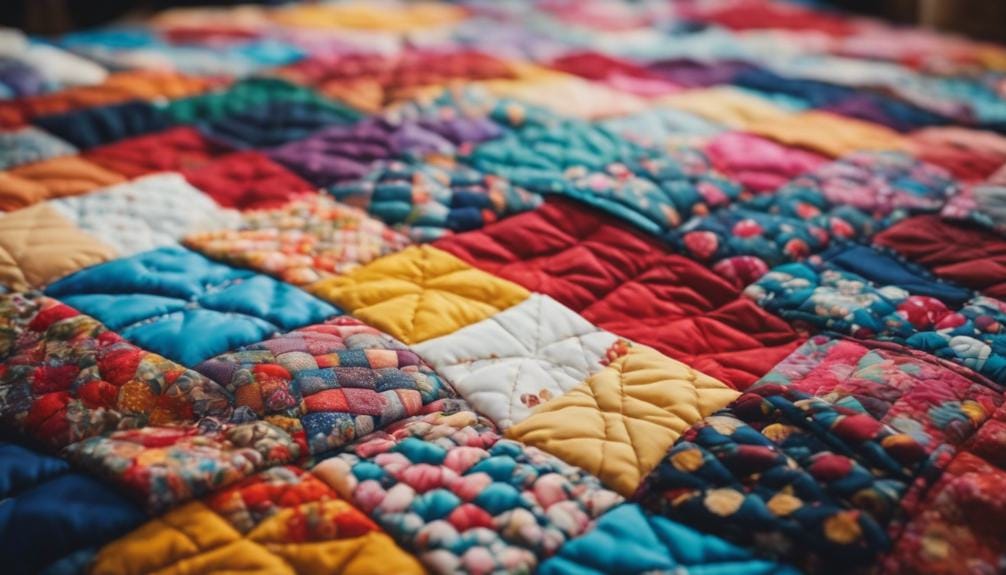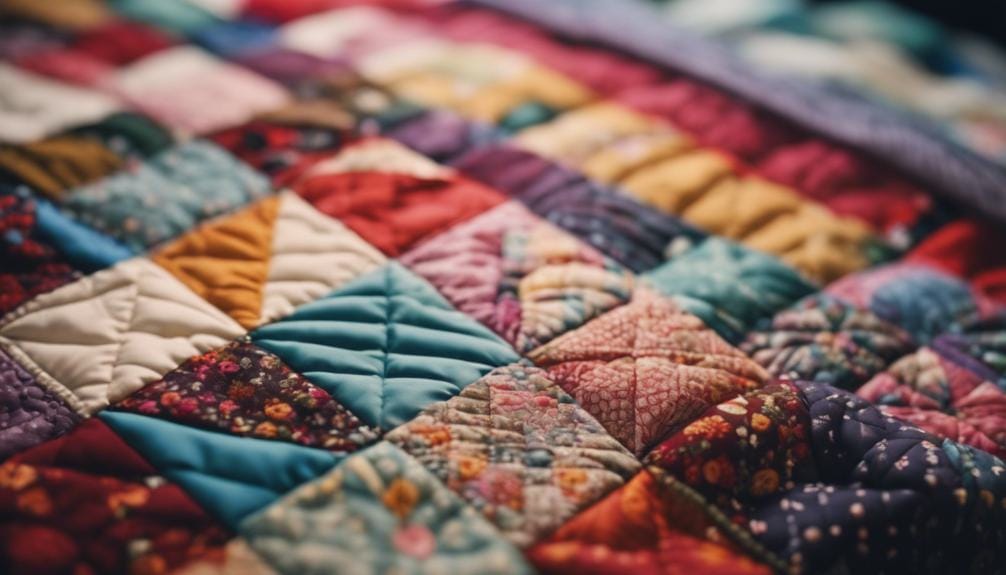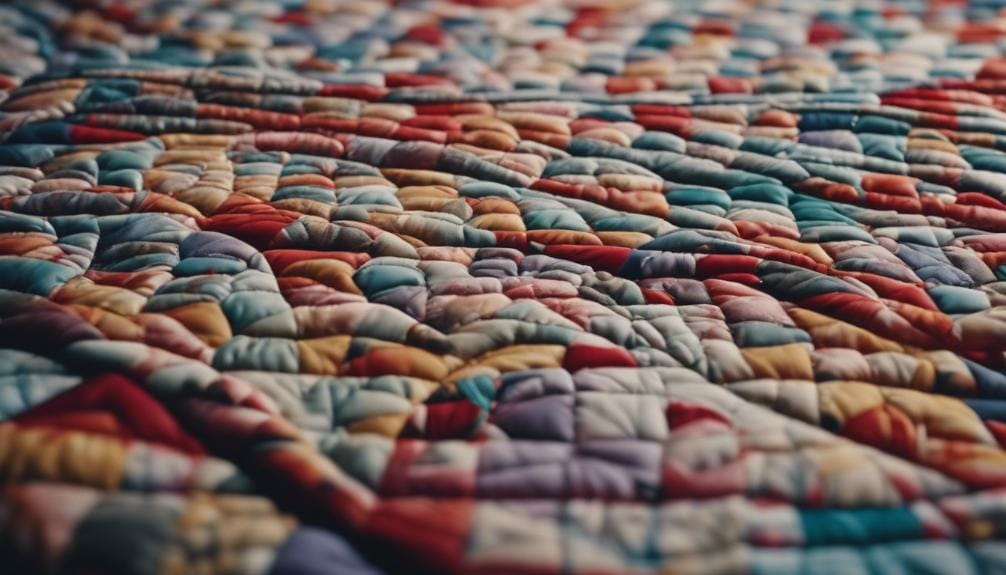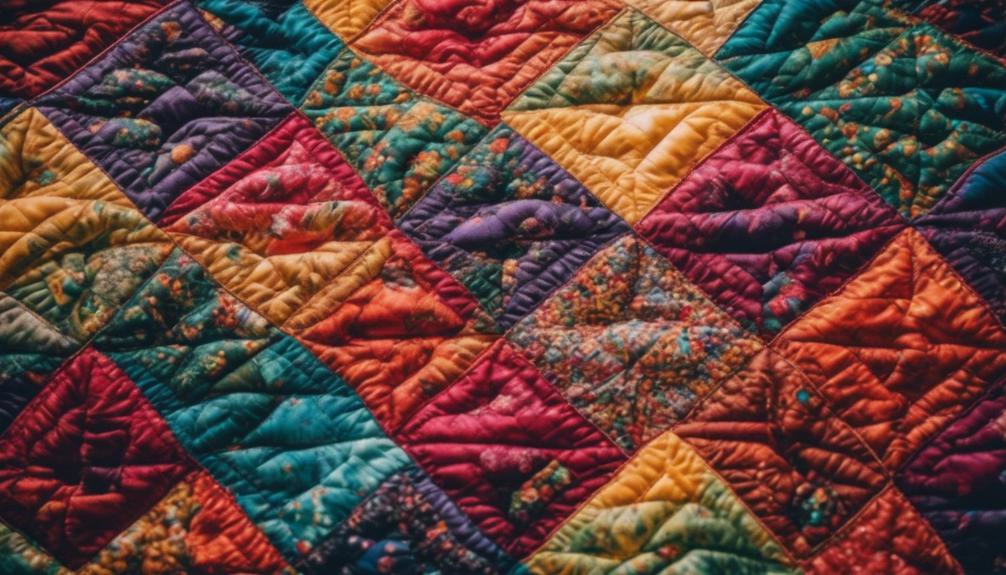Is Quilt Hand Made: Unraveling the Artistry
When it comes to quilts, the age-old saying ‘the devil is in the details’ couldn’t be more fitting. Have you ever wondered if a quilt is truly handmade? The intricacy of quilting techniques and the personal touch of handcrafted quilts often leave a lingering question in your mind.
Let’s explore the artistry and skill that go into creating these cherished pieces of textile art.
Key Takeaways
- Handmade quilts are meticulously crafted entirely by hand using traditional methods.
- They feature intricate designs and are made from high-quality fabrics like cotton.
- Unique characteristics like non-uniform stitching and personalized designs distinguish them from machine-made quilts.
- Quality fabrics elevate handmade quilts to heirloom status, emphasizing their durability and elegance.
Origins of Handmade Quilts
Handmade quilts trace their origins back to the 18th century when European settlers introduced quilting traditions to America, marking the beginning of a rich and enduring craft tradition. Initially, quilting served as a practical solution for early American women to transform leftover fabric scraps into warm bedding, showcasing both their resourcefulness and creativity. The art of quilting quickly spread amongst communities, with each region developing its unique style and techniques.
During this period, quilts were predominantly utilitarian, designed for warmth and durability rather than artistic expression. However, as time progressed, American women began incorporating more intricate patterns and designs into their quilts, turning them into pieces of art. The Amish and Mennonite communities in the US became particularly renowned for their exquisite handmade quilts, which are crafted using traditional methods and intricate stitching.
What started as a necessity soon evolved into a platform for artistic expression. Handmade quilts transformed from simple coverings into intricate masterpieces, reflecting the cultural heritage, individual creativity, and technical skill of their creators. Today, artisans continue to produce one-of-a-kind handmade quilts that not only provide comfort but also serve as tangible representations of history, tradition, and personal stories. The evolution of handmade quilts from practical bedding to intricate artistic expressions showcases the enduring legacy of this timeless craft.
Characteristics of Handmade Quilts

Exploring the craftsmanship of handmade quilts reveals a myriad of distinctive characteristics that set them apart as timeless pieces of artistry and functionality. Handmade quilts are meticulously crafted entirely by hand, showcasing a labor of love and attention to detail that ensures their uniqueness and quality. Each stitch is carefully placed, and every fabric selection is deliberate, resulting in quilts that stand out for their precision and durability.
Here are three key characteristics of handmade quilts that make them truly exceptional:
- Intricate Designs: Handmade quilts often feature intricate patterns like the Green Double Wedding Ring, Flower Garden, Log Cabin, or Lone Star designs. These detailed motifs require skill and patience to create, adding a touch of elegance and artistry to the quilt.
- Quality Fabrics: Handmade quilts are typically made from high-quality materials, with cotton fabric being a popular choice due to its softness, breathability, and durability. The careful selection of fabrics ensures that the quilt not only looks beautiful but also feels luxurious to the touch.
- Custom Sizing: Handmade quilts can be crafted in various sizes to suit different needs, from cozy throws to King Size masterpieces. This customization allows for a perfect fit on your bed or as a stunning piece of art in your home.
Techniques Used in Handmade Quilts

Crafting handmade quilts involves employing a variety of traditional techniques passed down through generations to create intricate and durable textile masterpieces. Handmade quilts are made entirely by hand, from the initial cutting and piecing of fabric to the final stitching of layers together. One of the key techniques used in handmade quilts is hand-stitching, where artisans meticulously sew individual pieces of fabric together to form the quilt top. This process requires precision and skill to ensure that the pieces align perfectly.
Quilting, another essential technique in handmade quilts, involves sewing the quilt top, batting, and backing together to create a cohesive and durable final product. Hand quilting, a traditional method where artisans sew intricate patterns through all layers of the quilt by hand, adds both decorative elements and structural integrity to the quilt. Additionally, applique is often used in handmade quilts to add unique designs and details by sewing fabric shapes onto the quilt top.
The meticulous hand-craftsmanship involved in creating handmade quilts ensures that each piece is one of a kind. Every stitch contributes to the overall quality and beauty of the quilt, showcasing the artisan’s attention to detail and dedication to their craft. The techniques used in handmade quilts not only result in stunning textile art but also provide a personalized touch that makes each quilt a unique and cherished creation.
Identifying Handmade Quilts

To determine if a quilt is handmade, one can examine the stitching and construction methods used in its creation. Handmade quilts often have unique characteristics that set them apart from machine-made counterparts. Here’s how you can identify a handmade quilt:
- Stitching: Handmade quilts feature meticulous stitching that isn’t uniform throughout the quilt. You may notice slight variations in the stitches, showcasing the artisan’s individual touch and attention to detail.
- Quilt Design: Handmade quilts often boast intricate and personalized designs. Artisans infuse their creativity and passion into the quilt design, resulting in a one-of-a-kind masterpiece. Look for designs that tell a story or reflect the artisan’s style.
- Material: Handmade quilts are frequently crafted from high-quality materials like cotton. The fabric used in handmade quilts tends to be soft, durable, and carefully selected to ensure comfort and longevity. When examining a quilt, pay attention to the fabric’s feel and quality to determine if it’s handmade.
Appreciating Handmade Quilts

Appreciating handmade quilts requires a keen eye for detail and an appreciation for the intricate craftsmanship that goes into creating these unique textile masterpieces. When you take the time to admire a handmade quilt, you’ll notice the precision in each stitch and the thoughtfulness put into every design choice. One popular type of handmade quilt is the Irish Chain quilt, known for its interconnected patterns symbolizing love and togetherness. These quilts often come in various sizes, from cozy throws to expansive King Size blankets, catering to different preferences and needs.
To truly appreciate a handmade quilt, it’s essential to recognize the effort that goes into making one. The personalized touch of a quilt made by hand adds a layer of sentimentality that mass-produced quilts lack. When examining a handmade quilt, pay attention to how the stitching looks—each thread tells a story of dedication and skill. The quality of fabrics used in these quilts elevates them to heirloom status, ensuring they can be cherished for generations to come.
To further illustrate the intricacy of handmade quilts, consider the following table:
| Aspect | Description |
|---|---|
| Craftsmanship | Exhibits quality craftsmanship and attention to detail |
| Design Elements | Showcases unique design elements that set it apart |
| Fabric Quality | Often made with high-quality fabrics that ensure durability and comfort |
| Stitching Techniques | Utilizes intricate stitching techniques that add depth and character |
| Size Options | Available in various sizes, including King Size for larger coverage |
Frequently Asked Questions
Do People Still Quilt by Hand?
Yes, people still quilt by hand. Quilting enthusiasts and artisans continue this tradition, valuing the intricate detailing and personal touch it offers. Hand quilting requires time, patience, and skill, resulting in cherished, high-quality creations.
How Do You Know if a Quilt Is Hand Sewn?
To determine if a quilt is hand-sewn, inspect for visible irregular stitching, slight variations in patterns, fabric alignment inconsistencies, and unique quilting designs. Hand-sewn quilts bear the artisan’s personal touch and intricate, non-uniform stitching.
How a Quilt Is Made?
To make a quilt, layer a woven top, wadding, and woven bottom. Stitch them together through quilting. Handmade quilts show detailed work, while machine-made ones are quicker with consistent stitching. Both methods offer unique styles and characteristics.
How Much Does a Handmade Quilt Cost?
When looking for a handmade quilt, prices can vary widely from $85 to $1,500 depending on factors like size, design, and craftsmanship. Custom orders may start at $199, while affordable options can be found on Etsy for as low as $22.
Conclusion
You have learned about the origins, characteristics, techniques, and ways to identify handmade quilts.
These meticulously crafted treasures are a testament to the skill and dedication of artisans who pour their hearts into every stitch.
The quality, durability, and personalized touch of handmade quilts make them truly special and cherished heirlooms.
Next time you come across a handmade quilt, take a moment to appreciate the artistry and tradition that goes into creating such a unique piece.
